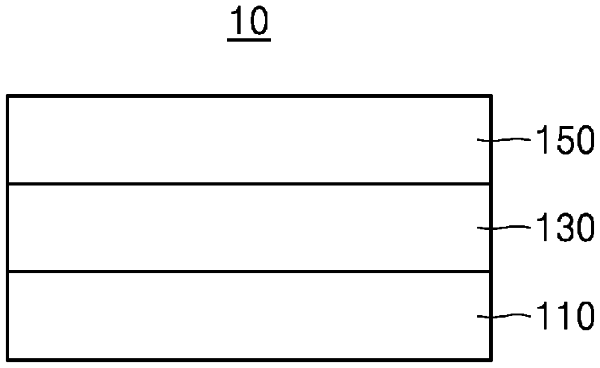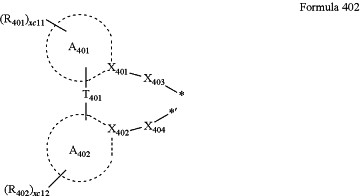| CPC H10K 71/311 (2023.02) [H10K 85/324 (2023.02); H10K 85/342 (2023.02); H10K 85/346 (2023.02); H10K 85/348 (2023.02); H10K 85/351 (2023.02); H10K 85/40 (2023.02); H10K 85/622 (2023.02); H10K 85/624 (2023.02); H10K 85/633 (2023.02); H10K 85/654 (2023.02); H10K 85/6572 (2023.02); H10K 85/6574 (2023.02); H10K 50/15 (2023.02); H10K 50/16 (2023.02); H10K 50/18 (2023.02); H10K 50/818 (2023.02); H10K 71/00 (2023.02)] | 20 Claims |

|
1. A method of purifying a phosphorescent dopant, the method comprising reacting the phosphorescent dopant with Ag2O, wherein the phosphorescent dopant comprises an organometallic complex represented by Formula 401:
M(L401)xc1(L402)xc2 Formula 401
 wherein, in Formulae 401 and 402,
M is a transition metal (e.g., iridium (Ir), platinum (Pt), palladium (Pd), osmium (Os), titanium (Ti), gold (Au), hafnium (Hf), europium (Eu), terbium (Tb), rhodium (Rh), rhenium (Re), or thulium (Tm)),
L401 is a ligand represented by Formula 402, and xc1 is 1, 2, or 3, and when xc1 is 2 or greater, at least two L401(s) are identical to or different from each other,
L402 is an organic ligand, and xc2 is an integer from 0 to 4, and when xc2 is 2 or greater, at least two L402(s) are identical to or different from each other,
X401 and X402 are each independently nitrogen or carbon,
ring A401 and ring A402 are each independently a C3-C60 carbocyclic group or a C1-C60 heterocyclic group,
T401 is a single bond, —O—, —S—, —C(═O)—, —N(Q411)-, —C(Q411) (Q412)-, —C(Q411)=C(Q412)-, C(Q411)=, or ═C(Q411)=,
X403 and X404 are each independently a chemical bond (e.g., a covalent bond or a coordinate bond), O, S, N(Q413), B(Q413), P(Q413), C(Q413)(Q414), or Si(Q413) (Q414),
Q411 to Q414 are each understood by referring to the description of Q1 provided herein,
R401 and R402 are each independently hydrogen, deuterium, —F, —Cl, —Br, —I, a hydroxyl group, a cyano group, a nitro group, a C1-C20 alkyl group unsubstituted or substituted with at least one R10a, a C1-C20 alkoxy group unsubstituted or substituted with at least one R10a, a C3-C60 carbocyclic group unsubstituted or substituted with at least one R10a, a C1-C60 heterocyclic group unsubstituted or substituted with at least one R10a, —Si(Q401) (Q402) (Q403), —N(Q401) (Q402), —B(Q401) (Q402), —C(═O)(Q401), —S(═O)2(Q401), or —P(═O)(Q401) (Q402),
Q401 to Q403 are each understood by referring to the description of Q1 provided herein,
xc11 and xc12 are each independently an integer from 0 to 10, and
** and *′ in Formula 402 each indicate a binding site to M in Formula 401.
|